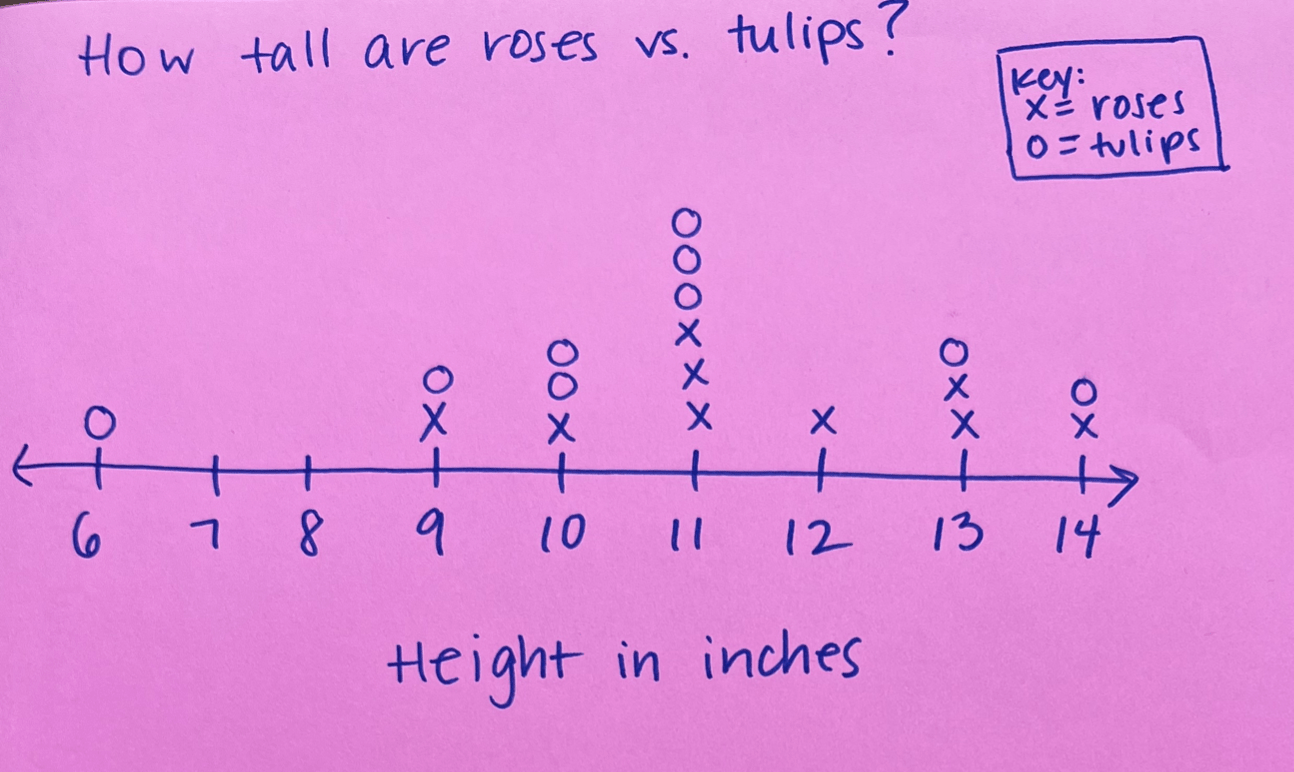Where is the x-axis and what does it show?
On the line and shows/represents the number.
What do you do after you collect data?
Organize all of the data (like putting it in a chart).
Looking at the line plot, what’s the outlier(s)?
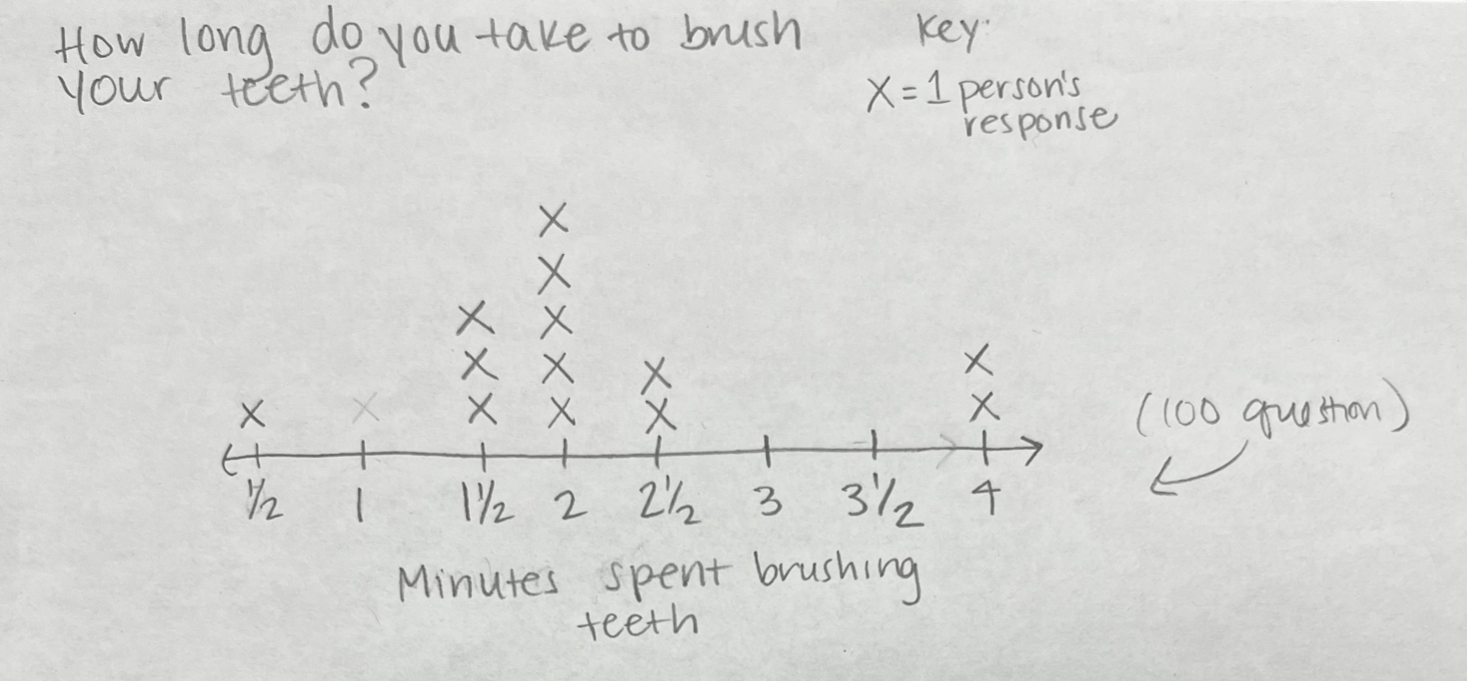
The outlier is 4 minutes. (Also acceptable: 1/2 minute)
What makes an effective representation?
An effective representation is easy to understand because it consists of:
- clear labels
- different colors
- different symbols
- evenly spaced values
- uniformed sized data/symbols.
What does the “range” mean?
The lowest value and the highest value on a line plot and the difference between the two values.
What is the first step when making a line plot?
Make a line!
Looking at the line plot, where is the gap in the data?
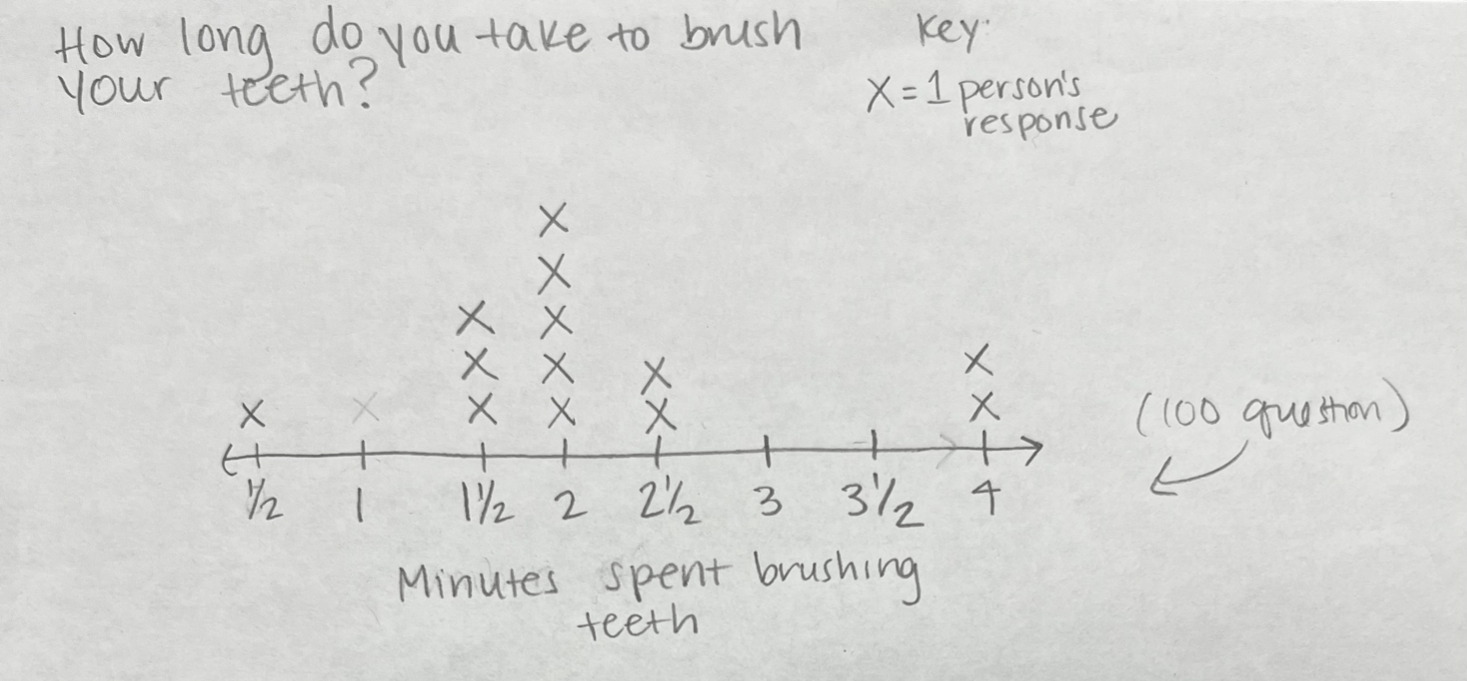
The gap is between 2.5 minutes and 4 minutes.
What is a “cluster” of data?
Data that is clumped/ close together. A cluster is a made up of more than half of the data.
How do we check that all the data has been accounted for?
Count all of the data in the set.
Looking at the line plot, what is the mode for the 7th grade?
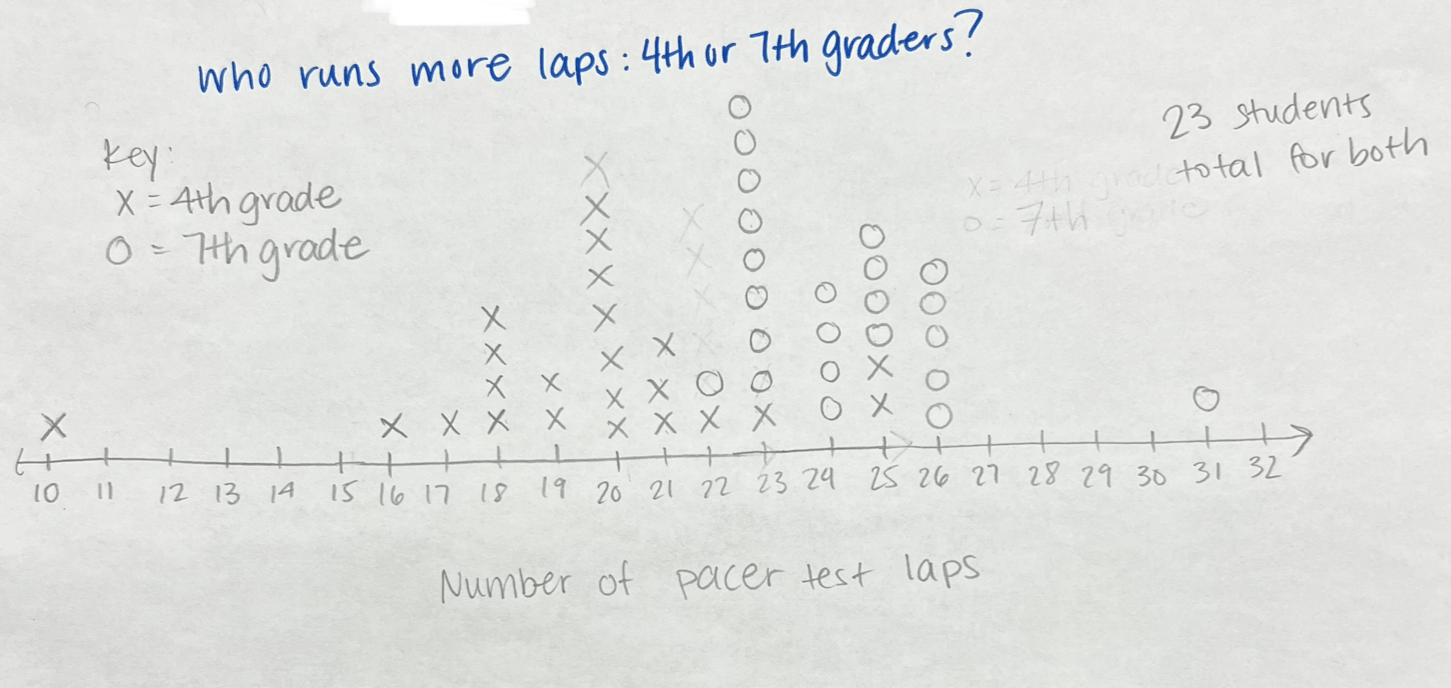
The mode for 7th grade is 23 laps.
What does the “mode” represent?
Represents the most frequent/occured value in a data set/line plot.
After writing in your lowest and highest values, what should put in between them?
Put ALL of the values.
Looking at the line plot, how does the key help you?

The key helps because it represents the symbols for the 4th grade data and the 7th grade data. It makes it easy to compare and see what data belongs to what grade.
Using this one set of data, create a line plot.
Data:
The number of pets that students have:
0, 2, 1, 3, 3, 3, 1, 0, 0, 2, 4, 8
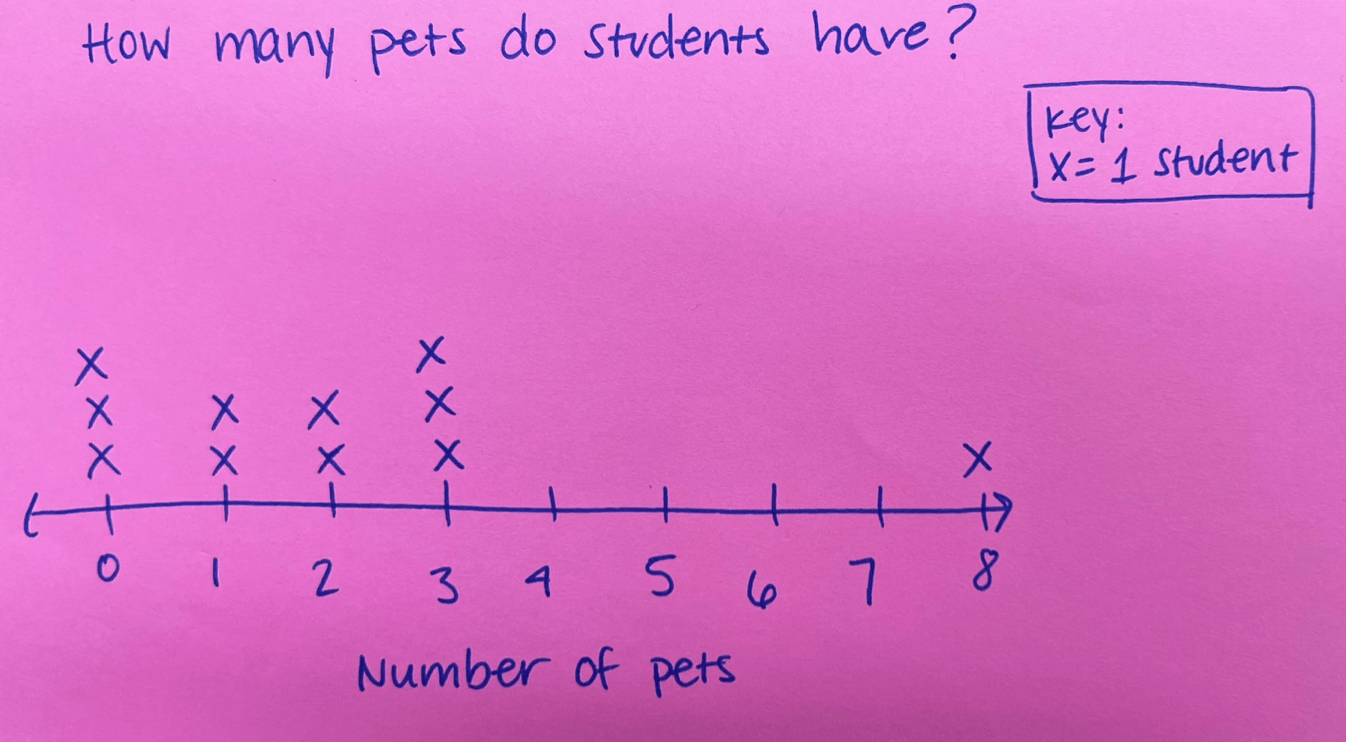
What does an “outlier” mean?
A data/value that is far away from the rest of the data. Think about the word: lies outside of the group.
What does the line plot checklist include?
Have a title
Show all values on the line
Label the x-axis
Include a key
BONUS: Have a statement
Share something you noticed about the data!

(Share anything!)
Use the 2 sets of data to make a line plot.
Data: Height of two types of flowers in inches.
Rose: 9, 11, 13, 13, 14, 10, 11, 12, 11
Tulip: 10, 9, 6, 13, 10, 11, 11, 14, 11
